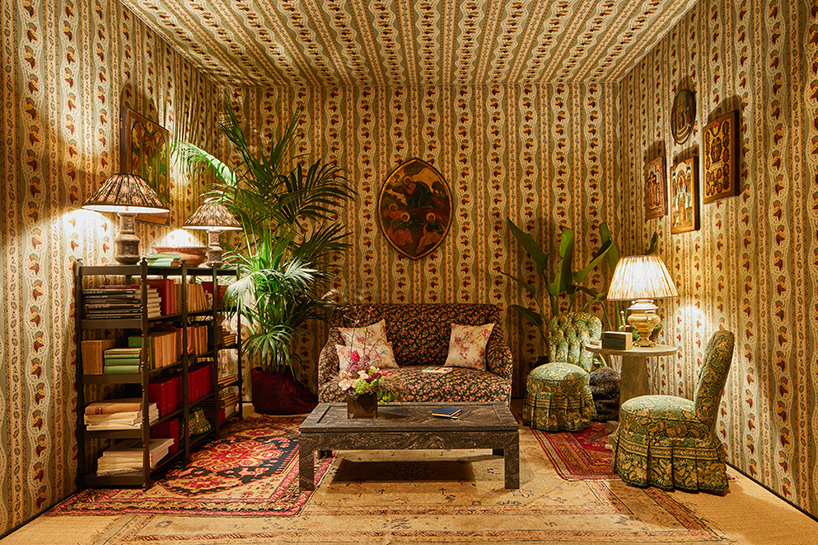Vastu Shastra, an ancient Indian architectural system that dates back over 5,000 years, holds a prominent place in shaping not just the construction of buildings but also the design of interiors. Derived from the Sanskrit words “Vastu” (meaning habitat) and “Shastra” (meaning science), Vastu Shastra is the art of harmonizing the elements of nature to create spaces that enhance well-being, prosperity, and overall harmony. As contemporary interior design evolves to meet the demands of modern lifestyles, there’s a growing interest in integrating Vastu Shastra into design curricula to teach students how traditional principles can complement cutting-edge design methodologies.

The Essence of Vastu Shastra
At its essence, Vastu Shastra focuses on the interaction between humans and their surroundings, aiming to create environments that enhance well-being and harmony. It emphasizes the careful arrangement of spaces, taking into account the flow of energy and alignment with the five core natural elements: earth, water, fire, air, and space. These elements, when balanced correctly, are believed to generate positive energy in both homes and workplaces. Additionally, Vastu incorporates directional principles, associating specific qualities with north, south, east, and west. The proper orientation and alignment of these elements and directions are thought to influence an individual’s health, prosperity, and overall sense of fulfillment.
In ancient times, Vastu principles were employed to design temples, homes, and entire cities with an emphasis on spatial harmony and environmental balance. The guiding belief was that when a space is in alignment with nature, it fosters physical, emotional, and spiritual well-being.

The Resurgence of Vastu Shastra in Modern Interior Design
As sustainable and holistic living grows in popularity, many modern homeowners and designers are turning back to ancient wisdom to create spaces that go beyond aesthetics. Vastu Shastra, much like Feng Shui in Chinese culture, has seen a revival in the world of interior design. Today, it’s increasingly being integrated into design education, shaping how future designers approach the balance between form, function, and well-being.
Modern interior design courses are beginning to include Vastu Shastra as a vital component. This ancient knowledge, when combined with contemporary design techniques, provides a balanced approach to creating living and working spaces that are not only functional but also deeply connected to the well-being of their inhabitants. By blending tradition with innovation, designers are finding new ways to create environments that foster positive energy, harmony, and overall satisfaction.
The Role of Vastu in Interior Design Education
Interior design programs that incorporate Vastu Shastra offer students a deeper understanding of the psychological and emotional impact of spaces. The focus shifts from merely creating visually appealing interiors to ensuring that the spaces support the well-being of the occupants. Courses on Vastu often delve into the significance of directions, the flow of natural light, the placement of furniture, and the strategic use of colors and materials—all in alignment with ancient principles.
For instance, Vastu Shastra emphasizes the importance of the main entrance, which should ideally face east or north, allowing the positive energy of the rising sun to enter the space. Similarly, kitchens are best placed in the southeast corner, aligning with the element of fire. Bedrooms in the southwest corner are believed to promote stability and restfulness.
Incorporating these principles into interior design courses helps students understand the cultural significance of spatial arrangement and the science behind energy flow. It also allows designers to offer clients spaces that are aesthetically pleasing, functional, and spiritually balanced.

Integrating Tradition with Modern Aesthetics
While the principles of Vastu Shastra remain rooted in tradition, they can be adapted to modern design needs. Contemporary architecture often emphasizes open floor plans, minimalist design, and the use of new-age materials like glass and steel, which may not have been part of the original Vastu guidelines. However, by understanding the core ideas of Vastu, designers can interpret them in a way that fits modern living.
For example, in today’s apartments where space is often limited, interior designers may not always be able to strictly follow Vastu’s directional guidelines. However, they can still focus on optimizing natural light, enhancing ventilation, and maintaining a sense of balance by placing furniture in a way that promotes the free flow of energy within the home.
Likewise, Vastu’s color recommendations can be adapted to modern palettes. While Vastu traditionally suggests earthy and natural tones for walls, modern interiors might interpret this through muted neutrals or pastels, offering a contemporary feel while still adhering to Vastu’s grounding principles.

Benefits of Learning Vastu Shastra for Designers
For interior designers, knowing Vastu Shastra offers a unique competitive advantage. It allows them to cater to a growing segment of clients who are not only interested in beautiful spaces but are also seeking environments that foster well-being, peace, and prosperity. Incorporating Vastu into design projects can attract clients who value holistic living and are mindful of how their surroundings impact their lives.
Furthermore, learning Vastu Shastra provides designers with a deeper cultural context, particularly in regions where these traditions hold significant meaning. It enriches their practice by blending ancient cultural wisdom with modern design techniques, making them more versatile and culturally responsive professionals.
The Future of Vastu Shastra in Interior Design
As awareness of the psychological and emotional impacts of living spaces continues to grow, the relevance of Vastu Shastra in interior design is likely to expand. The increasing demand for mindful living environments—spaces that promote well-being, positive energy, and a sense of harmony—suggests that Vastu principles will play an even greater role in shaping modern design practices.
Incorporating Vastu into design education equips the next generation of designers with the tools to not only create beautiful interiors but also transform spaces into sanctuaries that enhance the quality of life for their inhabitants.
Conclusion
The integration of Vastu Shastra into modern interior design courses is a testament to the growing interest in holistic and mindful living. As more designers embrace the balance of tradition and innovation, they are discovering how these ancient principles can offer a meaningful and practical approach to creating spaces that resonate on a deeper level. Whether through the alignment of spaces, the thoughtful placement of furniture, or the use of natural elements, Vastu Shastra continues to influence and shape the future of interior design, making it more than just an aesthetic endeavor but a pathway to harmony and well-being.

Where to Learn Interior Design and Architecture Courses in India
India offers a wide array of institutions where aspiring designers and architects can pursue their passion, blending creativity with technical expertise. Interior design and architecture courses have become increasingly popular as industries like real estate, hospitality, and retail continue to grow. Students have access to both traditional universities and specialized schools, offering everything from diplomas to degree programs.
One institution that stands out in this field is IVS School of Art and Design. Renowned for its comprehensive curriculum and hands-on learning approach, IVS has carved a niche in offering courses that integrate creativity, technical skills, and practical experience. Located in key cities like Delhi and Noida, IVS provides students with state-of-the-art facilities, mentorship from industry experts, and exposure to the latest trends in both interior design and architecture.



